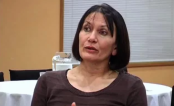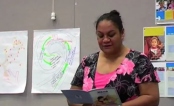Te Aho Arataki Marau mō te Ako i Te Reo Māori - Kura Auraki
Curriculum Guidelines for Teaching and Learning Te Reo Māori in English-medium Schools: Years 1-13
Curriculum guidelines 521 PDF (PDF, 4 MB)
Page navigation:
Te aromatawai
Assessment
The New Zealand Curriculum summarises the characteristics of effective assessment as follows:
Effective assessment:
- benefits students
- involves students
- supports teaching and learning goals
- is planned and communicated
- is suited to the purpose
- is valid and fair
The New Zealand Curriculum, p.40
As The New Zealand Curriculum explains, the primary purpose of assessment is to help teachers and students discover what they need to learn and do in order to improve the students’ learning. To achieve this purpose, assessment must be focused on understanding and improving the teaching and learning. The concept 'assessment for learning' is based on extensive research showing that formative assessment practices, which involve students in their own learning and assessment, have a powerful effect on motivation and achievement.
Assessment for learning is a continuing process that measures students’ achievement against learning outcomes derived from the achievement objectives of the curriculum (like the ones in these curriculum guidelines). Effective teachers share the intended learning outcomes with their students and work with them to develop success criteria that they return to throughout the related learning. When students clearly understand what they are expected to learn and what the learning will look like, they can help to monitor their own progress and take advantage of feedback.
A lot of assessment is informal. Teachers use their observations to inform their feedback to students about how their learning is going and what they should do next. However, teachers of te reo Māori also need to plan some more formal assessment opportunities that will enable them to assess all the relevant aspects of the students’ communicative ability, which may include the appropriateness of the Māori language used, its complexity, or the students’ fluency and/or accuracy. The emphasis on whakarongo (listening), pānui (reading), mātakitaki (viewing), kōrero (speaking), tuhituhi (writing) and whakaatu (presenting) should reflect the focus of class activities. For example, programmes designed for younger students may focus more on oral language in the early stages, and assessment at these stages will reflect this focus.
Teachers need to build into their reo Māori programmes time and processes for analysing and interpreting assessment information and considering its implications. Students also need planned opportunities to reflect on what assessment information tells them about their progress and what it might mean for their next learning steps.
These curriculum guidelines include teacher assessment suggestions. The intention is that teachers will use the assessment suggestions to measure their students’ performance as they participate in authentic language-learning tasks that take place within communicative contexts and reflect the achievement objectives, values, and key competencies of the curriculum. Note that although these guidelines do not explicitly reflect the achievement objectives of learning languages in The New Zealand Curriculum, the two sets of objectives have a common purpose and are closely aligned. (See The Importance of Learning Te Reo Māori.)
Students benefit from opportunities for both self-assessment and peer assessment. Refer to suggestions for student self-assessment.
Evidence shows that sharing assessment information with parents and whānau has a positive effect on student achievement. It builds shared expectations for student achievement and gives teachers a greater insight into their students’ strengths, needs and interests.



